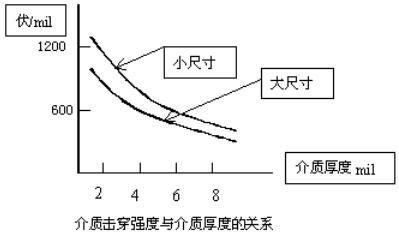How to understand dielectric breakdown strength
Category: Technical Articles
2020-11-13
dielectric strength
Dielectric strength characterizes the ability of a dielectric material to withstand a high-intensity electric field without being electrically penetrated, and is usually expressed in volts/mil (V/mil) or volts/centimeter (V/cm).
When the external electric field strength reaches a certain critical value, the electrons in the material crystal lattice overcome the binding of the charge recovery force and appear field-induced electron emission, resulting in enough free electrons colliding with each other to cause the avalanche effect, which in turn leads to the sudden breakdown current breakdown medium, making it invalid. In addition, there is another mode of medium failure. The heat generated under high voltage load will reduce the resistivity of the medium material to a certain extent. If it lasts long enough at this level, it will be in the weakest part of the medium. This mode is closely related to temperature, and the strength of the medium decreases with the increase of temperature.
The intrinsic dielectric strength of any insulator decreases due to the presence of physical defects in the microstructure of the material, and, like the insulation resistance, the dielectric strength is closely related to the geometry. Since an increase in the volume of the material leads to an increase in the probability of random defects, the dielectric strength is inversely proportional to the thickness of the dielectric layer, as shown in the following figure.
Similarly, the dielectric strength is inversely proportional to the number of electrode layers inside the chip capacitor and the physical size thereof.
Based on the above considerations, when designing the margin of the chip capacitor, it is necessary to ensure that no breakdown failure occurs during use and during a withstand voltage test (generally 2.5 times its working voltage).

